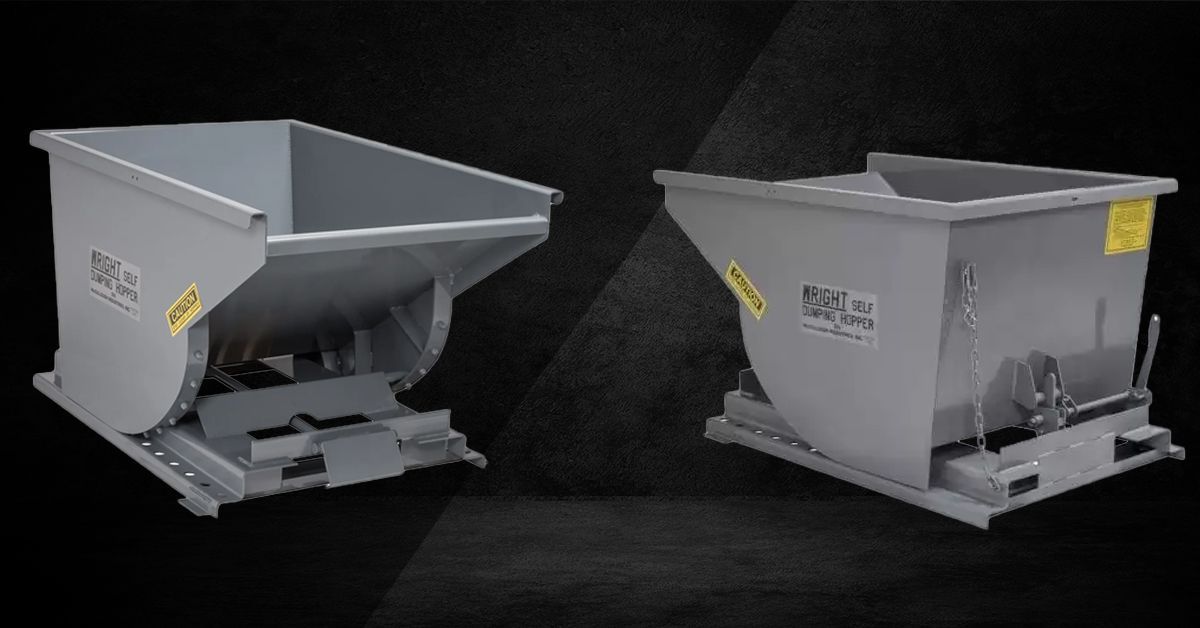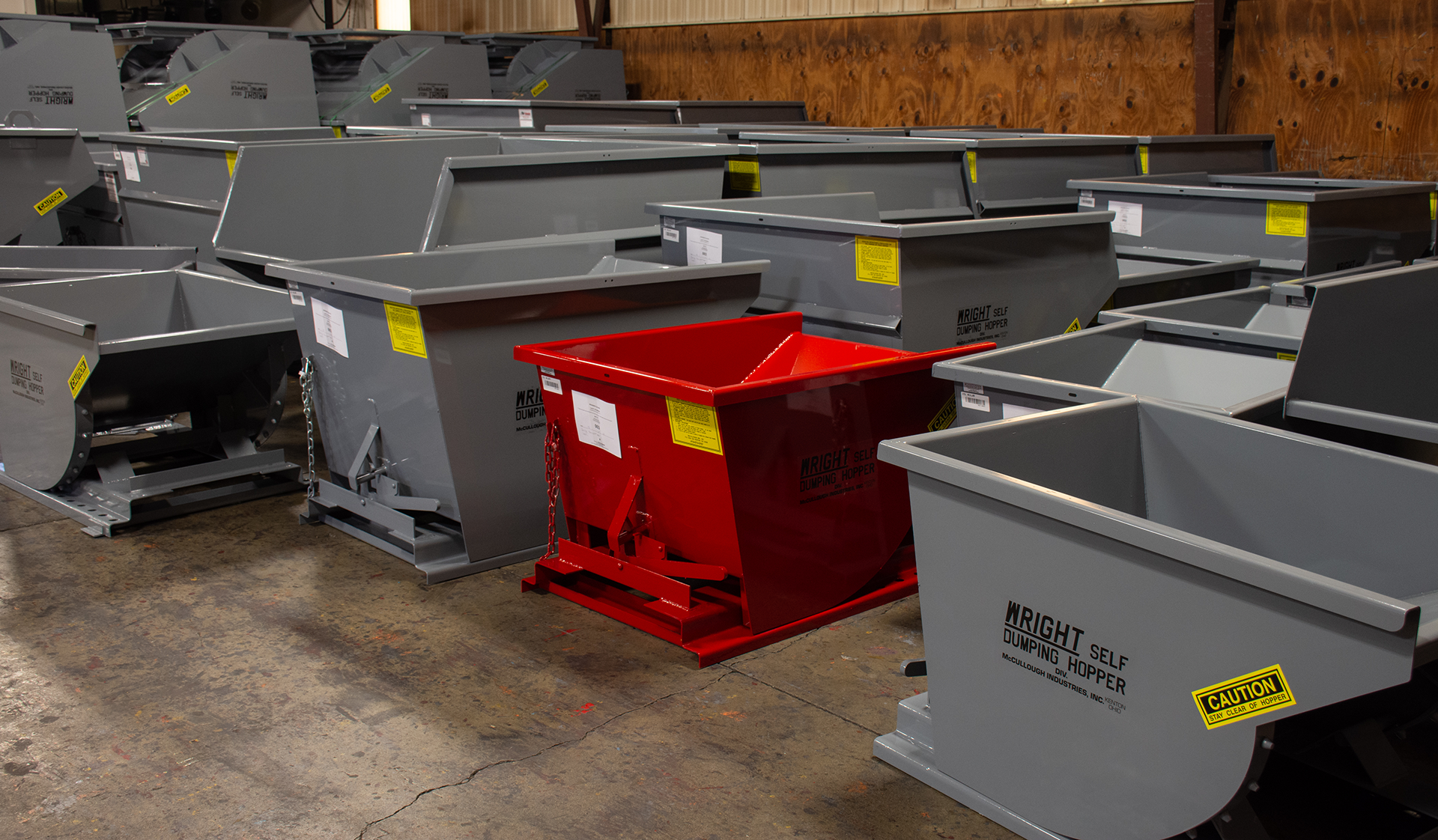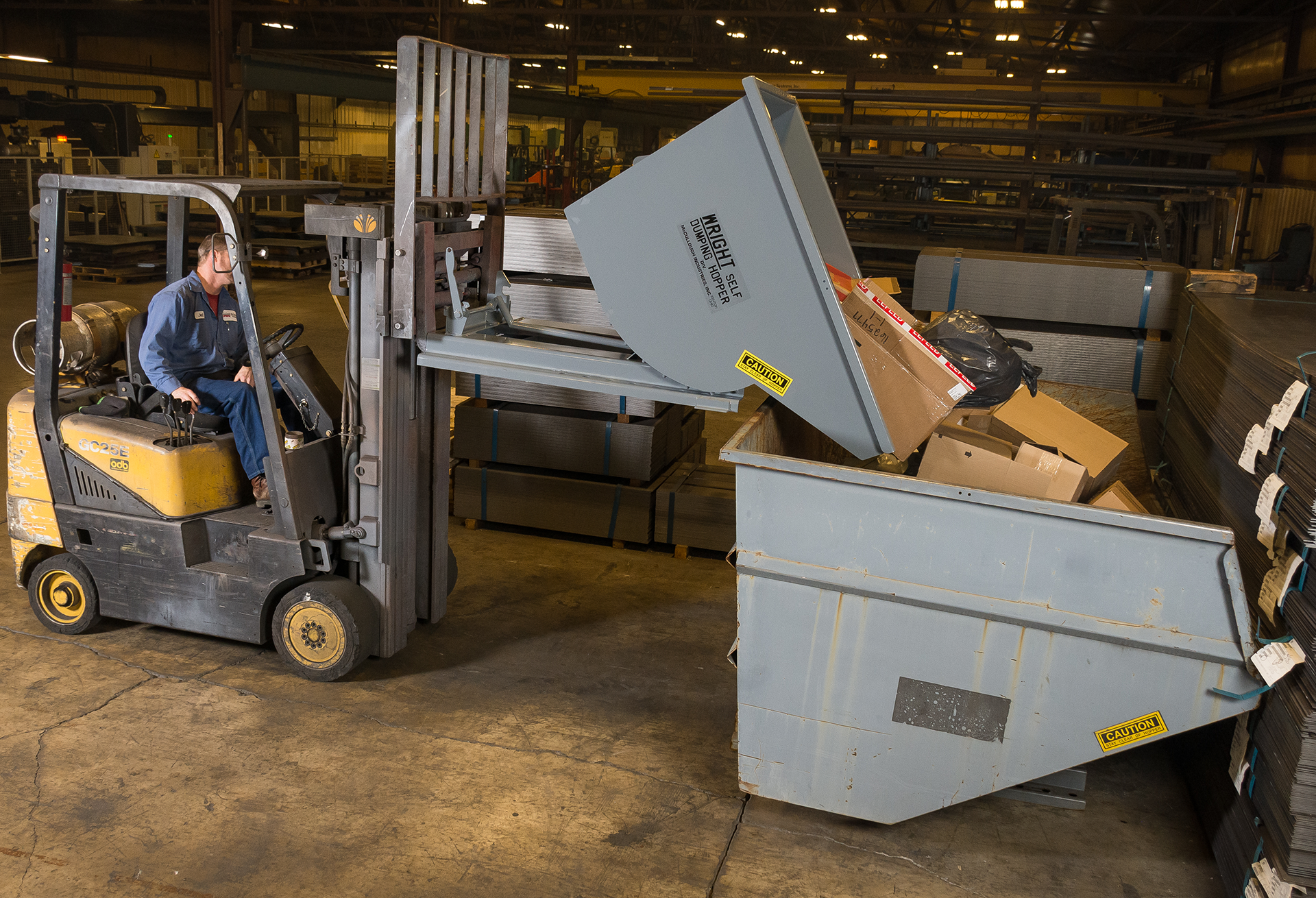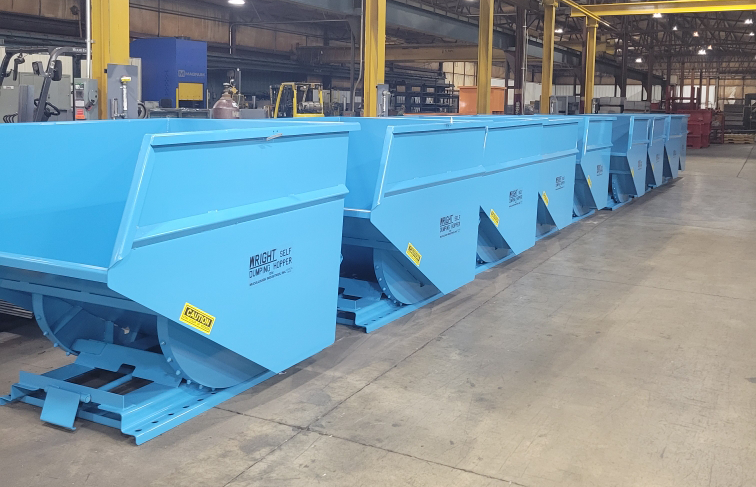
Selecting the right material handling hopper isn't just about capacity or dimensions. It’s about operational fit, safety, long-term durability, and how well the equipment integrates into your workflow. At McCullough Industries, we understand that every operation has unique material handling needs, which is why we offer a diverse lineup of self-dumping hoppers engineered for both performance and safety.
From compact, low-clearance environments to high-volume industrial sites, choosing the correct hopper design can increase efficiency and reduce labor strain. This guide walks through key considerations when evaluating a hopper and offers a comparison of the models available through McCullough Industries.
Understanding Hopper Requirements by Application
Every facility deals with specific materials, space constraints, and lifting equipment. Before focusing on size or gauge, it's important to define how your hopper will be used day to day. Are you transporting light scrap or heavy metal? Will the hopper be used at ground level or lifted repeatedly with a forklift or loader? Do you need to minimize spillage or accommodate tight clearances?
Answering these questions helps narrow down which hopper model is the right match for your operation. Below, we break down the most common scenarios and which McCullough hopper types are built for them.
Standard GEN II Self-Dumping Hoppers
Our standard GEN II line is a versatile, heavy-duty solution suitable for a wide range of industrial environments. Built with heavy steel and offered in capacities from 1/4 to 6 cubic yards, these hoppers feature a compact footprint, 3-inch fork openings, and a low center of gravity. These are ideal for general use, especially in manufacturing, warehousing, and distribution settings where reliability and strength are critical.
Low Profile Hoppers
When space is at a premium or equipment needs to slide under a low clearance, low profile hoppers are the best solution. These hoppers maintain volume capacity with reduced height, typically 17 to 24 inches tall. They are frequently used in inline production setups or maintenance areas where overhead constraints make standard hoppers impractical.
Bump Release Hoppers
For operations focused on hands-free dumping, bump release hoppers offer automatic unloading triggered by contact with a roll-off container. This not only improves efficiency but also reduces the need for operator dismounting. The self-righting design resets the hopper for immediate reuse, making it a good fit for bulk material transfer with limited human interaction.
Quick Attach Hoppers
Quick attach hoppers are designed for direct loader compatibility. These connect to the quick tach plate on a loader without the need for separate accessories and use built-in hydraulics for dumping. Quick attach hoppers are ideal for jobs that move across a large property or for field operations where forklifts aren't practical.
Key Features to Consider When Selecting a Hopper
In addition to matching your operation type, certain specifications make a difference in both performance and safety. Consider the following when comparing models:
| Feature | What to Consider |
|---|---|
| Capacity | Measured in cubic yards; match volume to material density |
| Load Rating | McCullough models range from 2,000 to 7,000 lbs |
| Steel Gauge | Options include 7 gauge, 11 gauge, and 1/4-inch base thickness |
| Fork Entry | Standard 3" openings; verify compatibility with your lift truck |
| Dump Mechanism | Manual, bump-release, or hydraulic, depending on model |
| Stackability | Available on some hoppers 1 yard and under |
| Accessories | Lids, casters, lift lugs, and coating options available |
Each of these factors can impact safety, cycle time, and wear over time.
Customizing for Your Workflow
McCullough Industries offers a range of accessories and design variations to tailor hoppers to your operation. Whether it's adding a 3-foot pull chain for remote dumping, selecting a polyurethane caster for smoother rolling, or choosing a leak-proof welded seam, these options ensure your hopper matches the way your team works.
In applications involving abrasive or wet materials, heavier gauge steel and leak-resistant welding can extend the service life significantly. For indoor clean environments, you may prefer a custom powder-coated finish. If you regularly handle high-temperature waste or jagged scrap, upgrading the base thickness or opting for a reinforced frame may be worth considering.
Efficiency and Safety Go Hand-in-Hand
No matter the model, safety remains central to every hopper design we manufacture. Formed edges around the pouring lip, low center-of-gravity designs, and self-locking mechanisms help prevent accidents and reduce physical strain. Our goal is to keep your operation moving without compromising your team's well-being.
Choosing the right hopper isn’t a one-size-fits-all decision, and that’s exactly why McCullough Industries offers a wide selection backed by decades of industry knowledge. If you're still unsure which option fits best, our team is here to help evaluate your application and recommend the best solution.
Ready to Match the Right Hopper to Your Operation?
Contact McCullough Industries to discuss your material handling needs and get personalized guidance. With the right hopper in place, you’ll reduce waste, protect your team, and improve workflow efficiency for the long haul.







